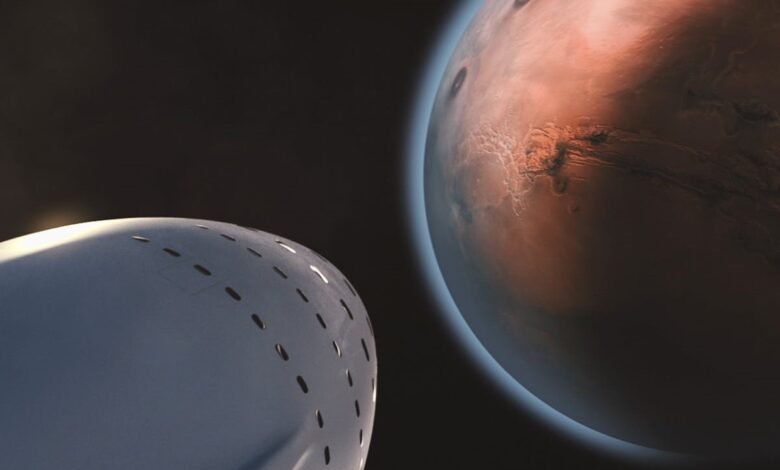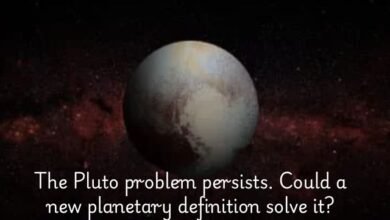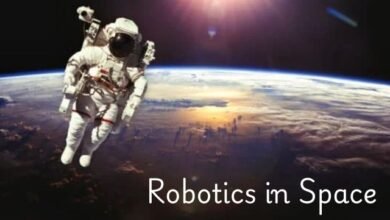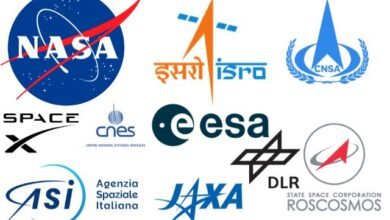Boeing Starliner Spacecraft: NASA Nears Crucial Decision on Troubled Boeing Starliner

Boeing Starliner, NASA has now got down to making a vital decision on Boeing’s Starliner which has experienced many problems and set backs. Since human spaceflight operational missions are now delayed for at least another year, there is doubt regarding the future of the Starliner. This article focuses on the problems of the Starliner, management and decision-making at NASA, and future problems in space exploration.
Table of Contents
Boeing Starliner is orbital space vehicle designed by Boeing for NASA’s COTS 2
The Boeing CST-100 Starliner is an example of commercial space vehicles in NASA CCtCAP, or Commercial Crew Transportation to the International Space Station. First, the Starliner was expected to open a new era in the US space exploration by becoming the means to stop buying Russian spaceships for manned flights.
| Aspect | Details |
| Design | Reusable spacecraft capable of carrying up to seven passengers or a mix of crew and cargo |
| Development Began | 2010 |
| First Uncrewed Flight | December 2019 (Boe-OFT-1) |
| Key Features | Autonomous docking, robust launch abort system, reusable up to 10 missions |
Recent Troubles and Delays
The Starliner has been plagued with multiple problems soon after its conception which resulted to a lot of time being used and doubts concerning its readiness.
Key Issues
- Software Glitches: That is why during the first uncrewed flight in December 2019, the spacecraft encountered numerous software problems in order not to reach the ISS.
- Hardware Problems: Other tests that were conducted after that also showed more failures in the hardware for which many troubleshooting efforts and repair were initiated.
- Safety Concerns: Safety checks have so far resulted in endless lists of issues that might be fatal when the craft is used in crewed missions.
| Event | Date | Issue Description |
| First Uncrewed Flight (OFT-1) | Dec 2019 | Failed to dock with ISS due to software glitches |
| Valve Issues | Aug 2021 | Launch aborted due to unexpected valve problems |
| Safety Reviews | Ongoing | Identified various safety concerns that delayed crewed missions |
NASA’s Decision-Making Process
NASA’s decision regarding the future of the Starliner also include assessments on aspects such as the efficiency of the spacecraft, risks associated to it and consequences to the program more broadly.
Key Considerations
- Safety: To guarantee the all possible safety measures are met aiming towards protecting the lives of astronauts in the spacecraft.
- Performance: Assessing the agency’s capacity in initiating credible space explorations.
- Cost: Determining the cut – off point that can enable the continuation of the program or have it terminated for lack of funding.
- Schedule: Establishing feasible paradigms of future operations to be carried out in the development of communicating spacecraft.
| Consideration | Importance |
| Safety | Highest priority to ensure crew safety |
| Performance | Must demonstrate reliable and consistent performance |
| Cost | Financial viability and budget impacts |
| Schedule | Realistic timelines for mission planning and execution |
The Discussion of the Findings for NASA and Boeing
The choice concerning the Starliner is also relevant for both NASA and Boeing since they can only win a compromise victory. For Communications satellites it influences tactical level decisions related to technical specifications and for NASA two levels – strategic level regarding manned space missions and one tactical related to the cooperation with private companies. For Boeing, it compromises the organisation’s image and future deals with NASA among other institutions.
Impact on NASA
- Strategic Shifts: Self-proclaimed humanitarian organizations may need to reconsider partnerships’ value and the strategies of choosing missions. (Boeing Starliner)
- Budget Allocation: Ending funding for CST 100, or dealing with problems the Starliner vehicle faced.
- Crewed Missions: Possibility of attaining the mission goals not within the time expected.
Impact on Boeing
- Reputation: Current problems can deteriorate Boeing credibility in the aerospace Industry.
- Financial Consequences: Expenses inclusive of identifying the cause of a problem and time loss as a result of solving it.
- Future Contracts: Impact on future contracts because of its closeness with NASA and other clients.
| Impact | NASA | Boeing |
| Strategic Shifts | May alter partnerships and mission planning | Reputation damage affecting credibility |
| Budget Allocation | Possible redirection of funds | Financial strain due to troubleshooting and delays |
| Crewed Missions | Potential delays in mission timelines | Influence on future contracts with NASA and other clients |
JAC 615 Aerospace Business Final Paper Aerospace Industry Reactions
The members in the aerospace industry have responded to the future of the Starliner both with worry and enthusiasm. Analysts are paying particular attention to NASA’s choice since its decision will influence similar cooperation with other companies in times to come. (Boeing Starliner)
Expert Opinions
- Optimism: Some had opinions that the existing problems should be solved in order to enhance the Starliner program.
- Skepticism: Some people have concerns with regards to the Starliner’s reliability and some of them recommended to NASA to invest in other spacecrafts.
- Support for Innovation: Most highlight on the need to enhance the private sector’s involvement in the space business.
| Expert Opinion | Perspective |
| Optimism | Resolving issues could strengthen the Starliner program |
| Skepticism | Doubts about viability suggest focusing on alternative spacecraft |
| Support for Innovation | Emphasizes the role of private sector innovation in advancing space exploration |
Future Possibilities of the Starliner
The future o the Starliner program therefore depends on the decision that NASA is set to make in the near future. (Boeing Starliner) The consequences may imply the further growth of the program with strict regulation or its temporary deactivation for further work, and the program may require radical changes.
Possible Scenarios
- Continued Development: More attention has been paid to the relevance of the issues and safety regulation.
- Temporary Suspension: Suspending the activities pursued for the program to be analyzed and, if needed, redesigned fundamentally.
- Program Overhaul: Clear alterations in the format, organization and its administration.
| Scenario | Description |
| Continued Development | Enhanced focus on addressing issues and meeting safety standards |
| Temporary Suspension | Pausing the program for in-depth review and necessary modifications |
| Program Overhaul | Significant changes to program structure and management |
Comparison with Other Spacecraft
Analyzing the Starliner alongside other craft such as SpaceX’s Crew Dragon helps in identifying how well or poorly the craft is performing.
SpaceX Crew Dragon vs. Boeing Starliner
| Feature | SpaceX Crew Dragon | Boeing Starliner |
| Development | Developed under NASA’s Commercial Crew Program, launched first crewed mission in 2020 | Ongoing development with delays, yet to complete a crewed mission |
| Performance | Successfully completed multiple crewed missions | Faced significant issues in uncrewed and planned crewed missions |
| Safety Record | Proven safety record with multiple successful missions | Ongoing safety reviews and identified concerns |
| Cost | Competitive pricing for NASA and private sector missions | Higher costs due to troubleshooting and delays |
NASA and Boeing’s official Press Releases
NASA’s Perspective
NASA has also stressed on the fact that before the spacecraft is used in carrying a crew, its safety and reliability will be given a high priority at Boeing. The agence recognizes the pains but insists that is where solutions are located. (Boeing Starliner)
| NASA Statement | Key Points |
| “Our priority is the safety of our astronauts and the reliability of our spacecraft. We are working closely with Boeing to address the issues and move forward with a safe and successful program.” | Focus on safety and reliability, close collaboration with Boeing |
Boeing’s Perspective
Boeing has affirmed its commitment to the continued launching of Starliners and its partnership with NASA to address the current problems. The organization’s mission is to ensure the company achieves the high standards typical to crewed space missions.
| Boeing Statement | Key Points |
| “We are fully committed to the Starliner program and working diligently with NASA to address the challenges. Our goal is to ensure the safety and success of our missions.” | Commitment to the program, diligent collaboration with NASA, focus on safety and success. (Boeing Starliner) |
See More:-
Table of Knowledge
| Topic | Details |
| Boeing Starliner | Reusable spacecraft designed for multiple missions, accommodates up to seven passengers, compatible with multiple launch vehicles. |
| OFT-1 Issues | Software issues during the first uncrewed test flight in December 2019, preventing docking with the ISS. |
| Subsequent Delays | Technical issues including valve problems, leading to multiple postponements of the second uncrewed test flight (OFT-2). |
| NASA’s Decision Criteria | Evaluates options based on safety, reliability, financial implications, and industry impact. |
| Commercial Crew Program | Aims to facilitate private sector involvement in space travel, reducing dependency on Russian Soyuz spacecraft. |
| Competition with SpaceX | SpaceX’s Crew Dragon has successfully completed multiple missions, influencing the competitive landscape. |
| International Collaborations | Reliable crew transport is critical for collaborative missions involving space agencies from other countries. |
| Industry Reactions | Mixed opinions from industry experts, NASA officials emphasize safety, public perception varies between support and frustration. |
| Future Scenarios for Starliner | Potential successful resolution of issues, further delays leading to reevaluation, increased reliance on SpaceX for crewed missions. |
| Safety and Reliability | NASA’s primary concern in decision-making, prioritizing astronaut safety and mission success. |
| Financial Implications | Consideration of costs related to further delays, additional test flights, and investments by Boeing. |
| Impact on Commercial Space Sector | The decision will influence Boeing’s position in the market, affecting the dynamics of the commercial space sector and the success of the Commercial Crew Program. |
Conclusion
The specific decision that is yet to be made by NASA on the future of Boeing’s Starliner is critical to the two companies. (Boeing Starliner) The consequences will not only define the future of this particular spacecraft, Starliner, but also the prospects of willingness to pay for tourism to space. While NASA and Boeing wrestle with all these, the aerospace fraternity and the public at large follow the events with keen interest.
FAQs
1.What is Boeing Starliner?
Boeing CST 100 Starliner is a vehicle designed to carry humans and get them to, and from, the space station.
2. What problems has the Starliner encountered?
There has been series of concerns in the issue of software in its first orange interact test in December 2019, and the recent valve issues in the second orange interact test that delayed its flight.
3. So how has NASA responded on these issues?
About this, NASA has been keenly observing the processes that Boeing has put in place to address the problems. Right now the agency is deciding on what their course of action is, again first thinking of the safety of the spacecraft second, the cost and the implications it will create in the space industry.
4. The likely consequences of the decision made by NASA include:
The potential scenarios involve the further cooperation with Boeing with the aim to sort out the problems, the shifting of more missions to SpaceX, or searching for the other options. The decision would be rather decisive for Boeing’s further participation in the CCP as well as in the totality of the space business.
5. This has what implication for the Commercial Crew Program?
Therefore, the outcomes of the successful expedition of the Starliner will determine the CAP objectives of the Commercial Crew Program which is to minimize the reliance on Soyuz spacecraft through engaging private players.
6. Implications for international collaborations are?
Crew transportation is crucial when conducting operations along with space agencies from other countries. The result of come decision of NASA will influence the existing nature of these partnerships and the practice of many joint operations.
7. Last, how has the public received the problems associated with the Starliner?
Perceptions have been divided to some supporting what Boeing has been doing to address the problems while others have been displeased at the fact that progress has been slow. Four astronauts will travel to space by Abram-3 to confirm that it is safe for astronauts, according to NASA officials.
8. What is the rivalry of Boeing and SpaceX?
Crew dragon, belonging to SpaceX has carried out more than one mission and hence Boeing has set a very high benchmark for itself. Next decision in the case of Starliner will become a key to understanding further rivalry between two of the largest market players of commercial space.
9. What is the loss from the Starliner’s delays financially?
There are strict concerns about the money factors with reference to Boeing and NASA such as the extra flight test and the money invested on the business by Boeing Company. However, these financial factors are equally competing with the agency’s objective of attaining a safe and sound spacecraft.



